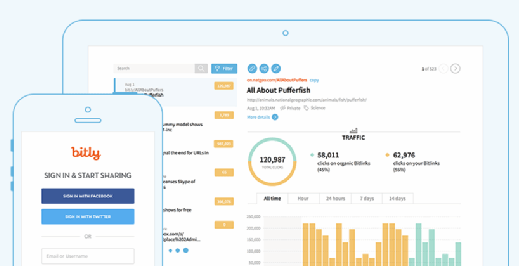Bitly
What is Bitly?
Bitly is a URL shortener service that enables users to shorten website links established in 2008. Bitly can also generate QR codes and create "link-in-bios'' for Instagram users, which lets them add clickable links to their profile -- a feature that Instagram does not currently offer. Bitly also offers users powerful web analytical tools, the ability to track trends and options for brand management.
As the world becomes increasingly connected, the need for efficient ways to share information has never been greater. Enter Bitly, which currently boasts more than 300 million users and handles billions of clicks per month.
While its primary use is in social media, Bitly has also been adopted by many companies to track customer engagement and measure the success of marketing campaigns.
There are some security risks associated with using any URL shortening service. However, Bitly is a useful tool for individuals and businesses alike.
How does Bitly URL shortening work?
The technology uses the response status code TTP 301 redirects to create shortened URLs. Simply put, Bitly takes long URLs and replaces the entire link with a shorter series of numbers and letters.
These shortcuts are permanent and cannot be changed once they are created. URLs that are shortened with the Bitly service use the bit.ly domain. This is necessary to share links via social media, especially Twitter, which has a tight character limit.

What other services does Bitly offer?
In addition to creating shorter links, Bitly also offers users a suite of powerful analytical tools. With Bitly's analytics, users can see how many people have clicked on their links, where those clicks came from and what devices were used. This information can be used to track the success of marketing campaigns, measure the reach of social media posts and more.
Bitly also offers users the ability to track trends. By monitoring the click data associated with certain keywords or phrases, users can get a sense of which topics are resonating with their audience and adjust their content accordingly.
Finally, Bitly provides options for brand management. Users can create custom Bitlinks (i.e., shortened URLs that contain the user's chosen branded domain) and use Bitly's Branded Short Domain feature to create short URLs that are specific to their brand (e.g., bit.ly/mybrand).
What are the security risks that come with using a URL shortener service?
While there are many benefits that come with using URL shortening services like Bitly, there are also some security risks users should be aware of.
One of the main ways that cyber criminals take advantage of URL shorteners is by spreading malware or worms through the shortened links. When users click on these links, they can inadvertently infect their computers with malicious software.
Additionally, shortened links can make it difficult to know where you are being directed to. Cyber criminals can use this to their advantage by redirecting users to phishing websites. While URL shorteners can be a useful tool for sharing content, it is important to be aware of the potential security risks involved.
These risks can be mitigated by taking some simple precautions, such as only clicking on shortened links from trusted sources and being cautious when clicking on links in emails or social media posts (i.e., hovering over the link to see where it leads before actually clicking on it).
On balance, Bitly is a useful tool for individuals and businesses alike. While there are some security risks associated with using any URL shortening service, these risks can be mitigated by taking some simple precautions.
See also: social media analytics, vanity URL, social CRM, social media marketing tips